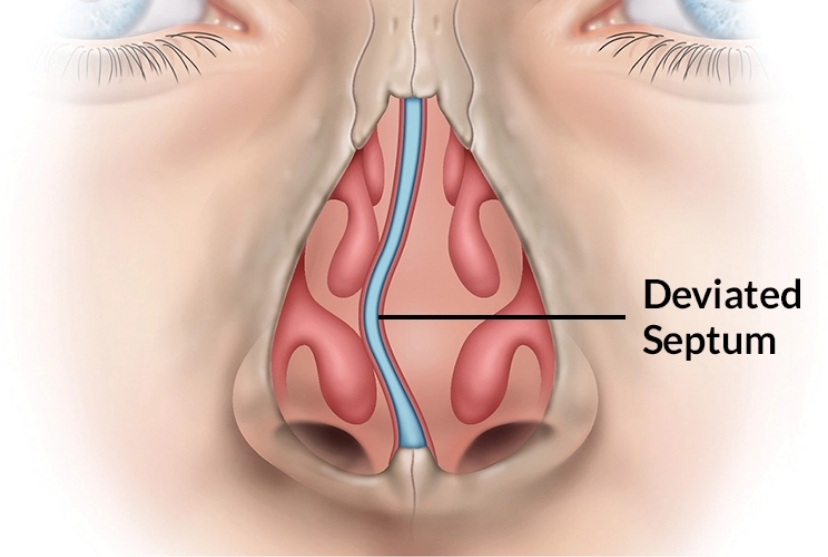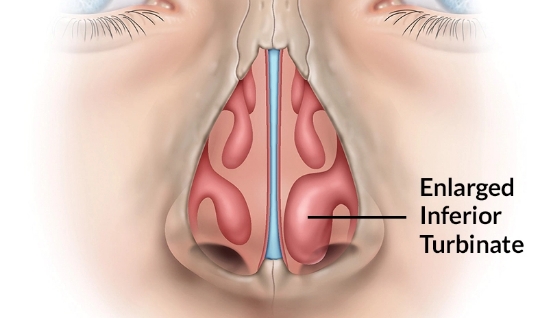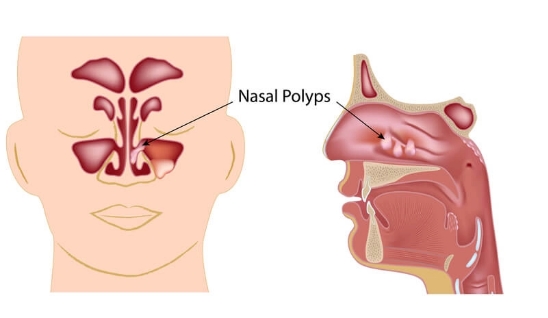Nasal Obstruction
Nasal obstruction is usually caused by the combination of septal deviation and inferior turbinate hypertrophy. Nasal obstruction is anything that restricts the airflow in and out of the nose, either affecting one or both nasal passages. Some nasal obstruction is an anatomical blockage, which can narrow the nasal cavity and feel like congestion.



There are several symptoms that indicate a nasal obstruction including trouble sleeping, headaches, a runny nose, facial pain/pressure, nasal congestion/stuffy nose, difficulty breathing through the nose, and drainage down the back of the nose into the throat. If the blockage is from anatomical factors, it could be from enlarged adenoids, benign or cancerous nasal tumors, a deviated septum, enlarged turbinates, nasal valve collapse, or polyps.
Nasal blockages can easily be repaired by performing a septoplasty and inferior turbinate reduction surgery, both performed endoscopically through the nostrils. Prior to surgical intervention, nasal blockages can be treated with topical nasal steroid sprays and decongestants, depending on their cause. If the cause is anatomical, for instance, then a non-surgical treatment wouldn’t successfully remedy the blockage. Because some causes can be polyps or tumors, it is important to have nasal blockages evaluated and treated.
Surgeries
Septoplasty
A deviated or crooked septum can make it more difficult to breathe and increase the risk of sinus infections due to poor drainage. A septoplasty helps to remedy this condition by straightening the bone and cartilage that is dividing the space between the two nostrils. The procedure is performed under general anesthesia for patient safety and comfort and involves trimming and/or repositioning the crooked cartilage or bone of the septum.
Inferior Turbinate Reduction
This is a surgical procedure that improves airflow in patients with chronic nasal obstruction. The surgery removes excess tissue around the turbinate bones, which are small hotdog shaped structures within the nose that warm and humidify the air as it passes through your nasal cavity on the way to the lungs. The turbinates can become inflamed and swollen from irritation from allergies, infections, or chronic Afrin (oxymetazoline) use. Inferior turbinate reduction is a common procedure and can be performed under general anesthesia as a same day/outpatient surgery.
Request an Appointment Today
Take action to finally solve your sinus problems today!

